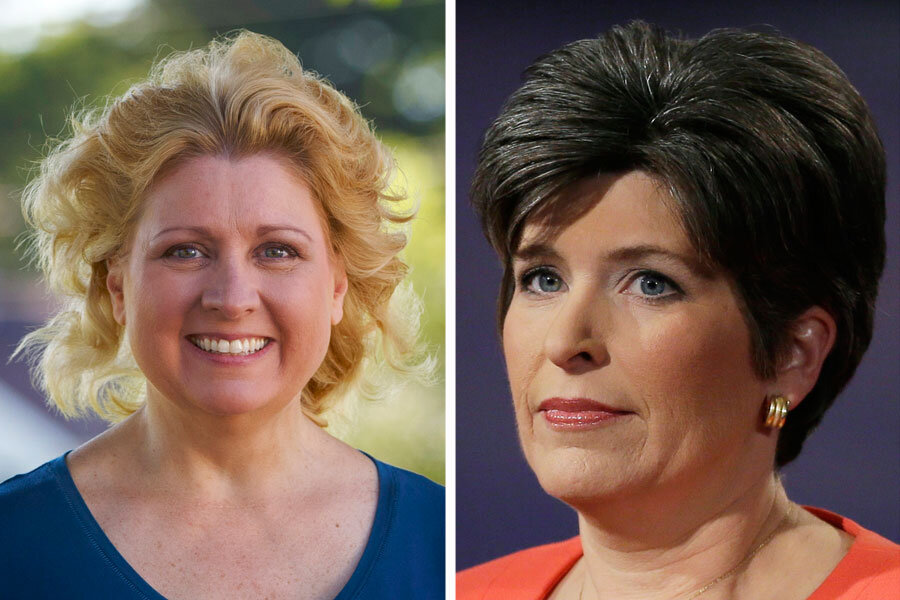Do women voters favor women candidates? Not really, Iowa shows.
Loading...
| Des Moines, Iowa
This November, Iowans have the opportunity to break the glass ceiling and send their first female to Congress.
Staci Appel, Democratic candidate in Iowa's Third Congressional District, yells it from the rooftops. “Iowans can make history this year,” her website enthuses.
Joni Ernst, Iowa's Republican candidate for the Senate, doesn’t make a big deal of her gender. “I believe that we should vote for the person, the right candidate, regardless of gender,” she says matter-of-factly.
Is she right, does gender really not matter to voters? Or, perhaps, do women vote for women?
The short answer is this: Women vote for Democrats.
Admittedly, that’s an overly broad statement that needs the words “tend to” in there. “Women are more likely to vote for Democrats” than men, says Kelly Dittmar, assistant professor at the Center for American Women and Politics at Rutgers University in New Brunswick, N.J.
Party preference trumps “any sense of gender affinity for a woman candidate,” she says. Sometimes, when both candidates are pretty moderate or perceived to be fairly equal, women will cross over to support a female candidate, such as in the case of former Republican senator from Maine, Olympia Snowe. “But that’s rare.”
Interviews on the campaign trail in Iowa – as unscientific as they may be – bear Professor Dittmar out, as do “gender gap” data.
For instance, Ms. Ernst, who is a senator in the Iowa state legislature and a lieutenant colonel in the Iowa Army National Guard, enjoys a 15-point advantage among males.
It’s the reverse for her opponent, Democrat Bruce Braley, an Iowa congressman. He enjoys a 15-point advantage among women, according to a Des Moines Register poll this month. The two are running neck-and-neck in this purple state.
Republicans and Democrats are both working hard to get out the women’s vote in Iowa. But the gender gap among voters explains why Ernst is sticking to a boilerplate GOP message of low taxes, a balanced budget, and fewer regulations, while Mr. Braley is speaking directly to women about issues such as pay equity and the minimum wage.
And so is Ms. Appel, who has a phalanx of volunteers – Appel Women For Change – contacting women voters on her behalf. She says that voters should consider her positions and accomplishments. But she also says that having more women in elective office makes a real difference. That, at least, was her experience as an Iowa state senator.
“When we brought more women into the state Senate, we looked at early childhood issues, we looked at child safety issues, we looked at child diet and physical activity,” says Appel. Those were previously neglected areas, she points out.
“It would be great to be elected as the first [Iowa] woman to Congress, because I think we need more women there,” she says. Right now, there are 79 women in the House and 20 female senators, out of a total of 535 seats.
Despite several high-profile races that give the impression that the midterm elections are the “year of the woman,” it’s not a record year in terms of number of female candidates, says Dittmar at Rutgers.
Fifteen women are running for Senate, compared with a record 18 in 2012. In the House, 161 women are running, compared with a record 166 two years ago.
“We’re at a plateau,” she says.






